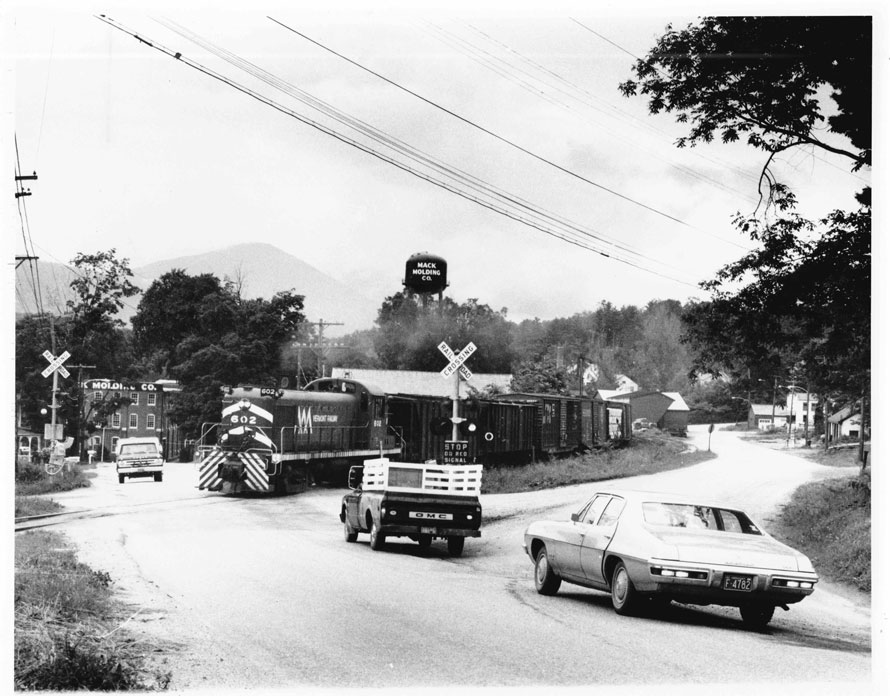
Time marches on. That’s what prompted me to get a summer job in high school in 1968 so I could buy a good camera and begin to document the fast-disappearing railroad scene so familiar to me. Not four-track mainline stuff, but the single track of the Vermont Railway (VTR) that passed through my home town. Absent traffic during the Rutland Railway strike, the appearance of the first VTR trains, led by RS-1s in a flashy red paint job showing up in 1964, was welcome indeed.
My family moved south to Arlington in ’69, putting me closer to a minor hub of the railroad, North Bennington, where interchange was made with the Boston & Maine. The wye there connected also with the former Chatham Sub-Division of the Rutland. Abandoned in 1953, it had been torn up below Bennington, a few miles south. The weekday VTR train from Rutland still served a few Bennington businesses on this branch: a paper mill, a coal and lumber dealer, a concrete block mill, and a pottery were served on a spur that ran alongside County Street.
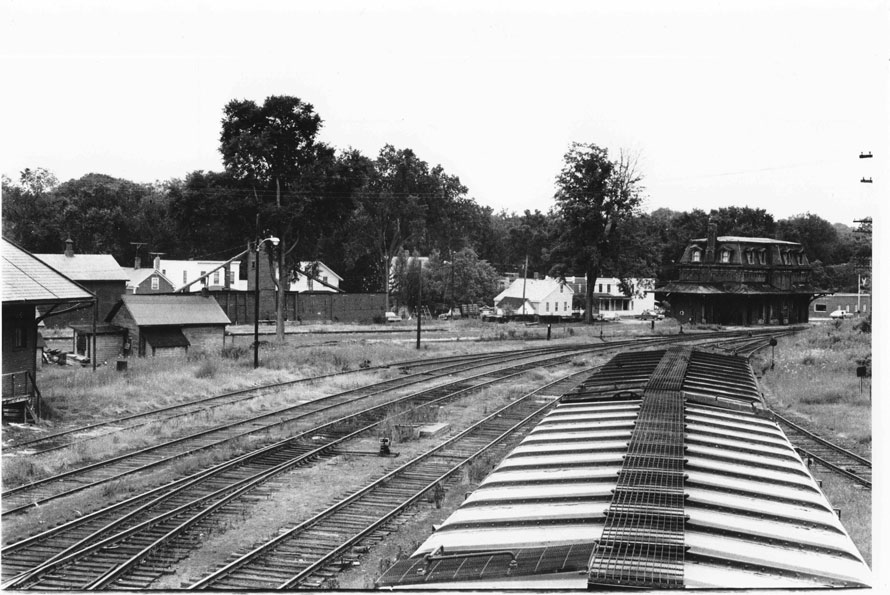
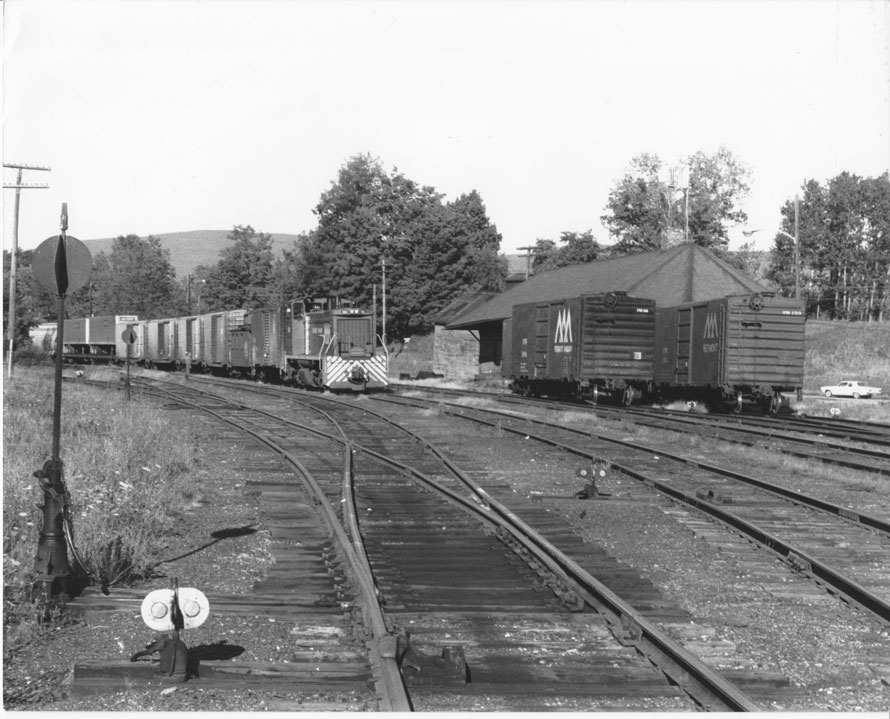
The shadows of the old Rutland Railway and its allure of ancient waywardness lingered within the wye and also in the persona of the tenured men working there. During my first visit, when I got up my courage, walked up a rickety set of stairs, twisted the rusty doorknob of the olive-drab freight house and walked in, I made the acquaintance of the agent, Chester ‘Chet’ Platt, who’d gone to work for the Rutland in 1924 and by 1930 had become a station agent at Leicester Junction. I watched, enthralled, as Chet pounded out train orders and correspondence hunt-and-peck style on a manual typewriter, having the feeling that—somehow—I’d gone back in time.
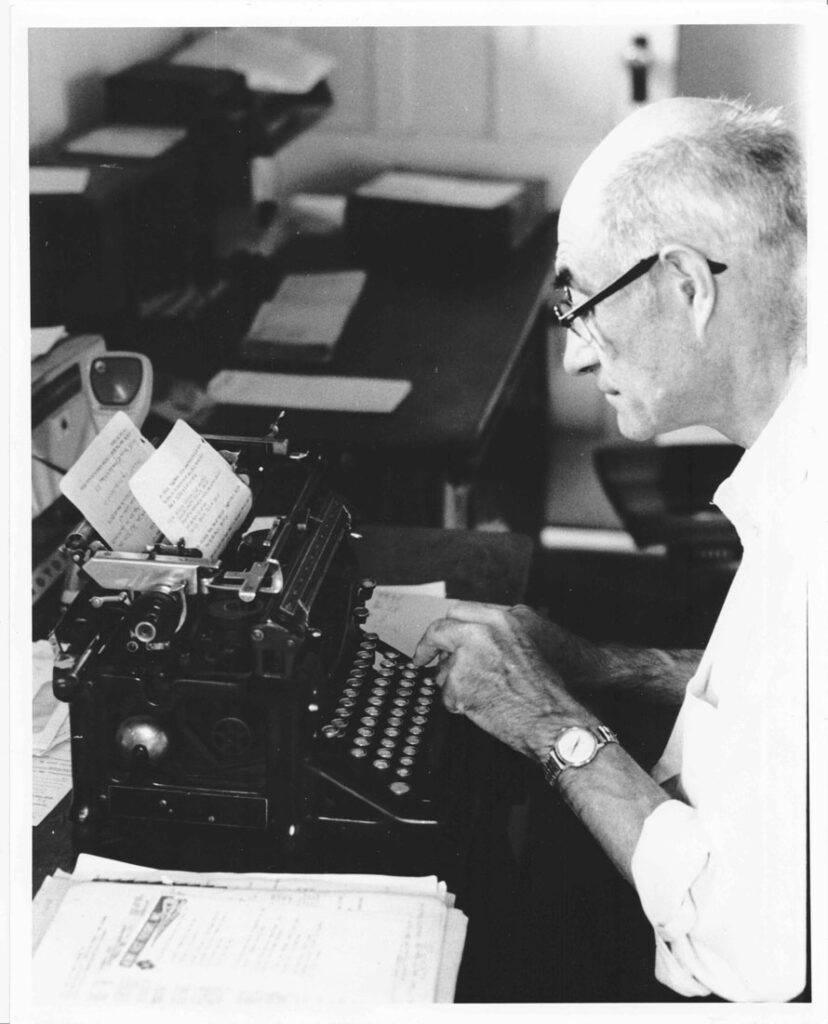
An old clock on the wall ticked out the minutes, scissors-type candlestick phones still loomed over a couple of work spaces, and an ornate mahogany train register desk, gold-leaf lettered for the B&M’s predecessor Troy & Boston was still in use. I half expected to hear a block bell sound, or a telephone ring, and someone say: “Copy, 19.” The crackle from the Motorola radio connecting Chet with the railroad’s offices was the only indication that time had, indeed, marched on since the 1950s.
Beside the freight house, once a busy place where half a dozen men worked handling LCL freight or express stood an ice house, sagging with age and gently settling into obscurity among the weeds. It was where milk cars had been iced on their way to Chatham long ago; now, the Chatham Sub—what the old heads called “the Pea Vine” for its meandering route—had been growing grass south of Bennington since mid-1953. Just a couple of hundred feet west stood the derelict Victorian-era passenger station, shuttered and essentially abandoned that same year.
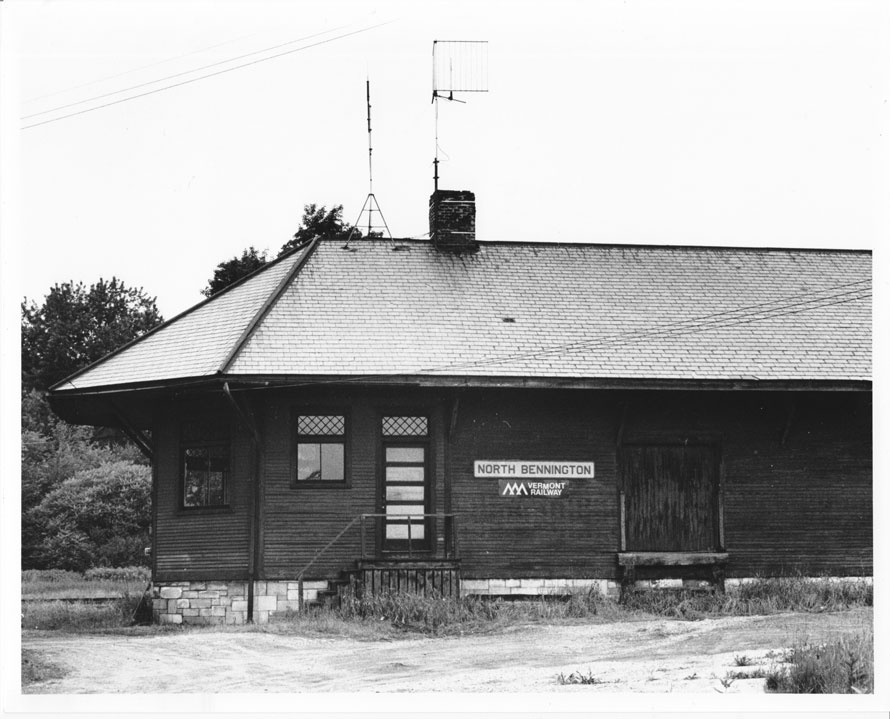
Close by under stately maple trees stood two speeder sheds, headquarters for the MofW crew that patrolled the tracks each day as far as Arlington and southward down “The Branch,” as the remnant of the Chatham Sub was then called, into Bennington. When I saw them, I ventured a guess that those heavily-weathered buildings with patched-up tarpaper roofs hadn’t felt the touch of a paint brush since Calvin Coolidge was in the White House.
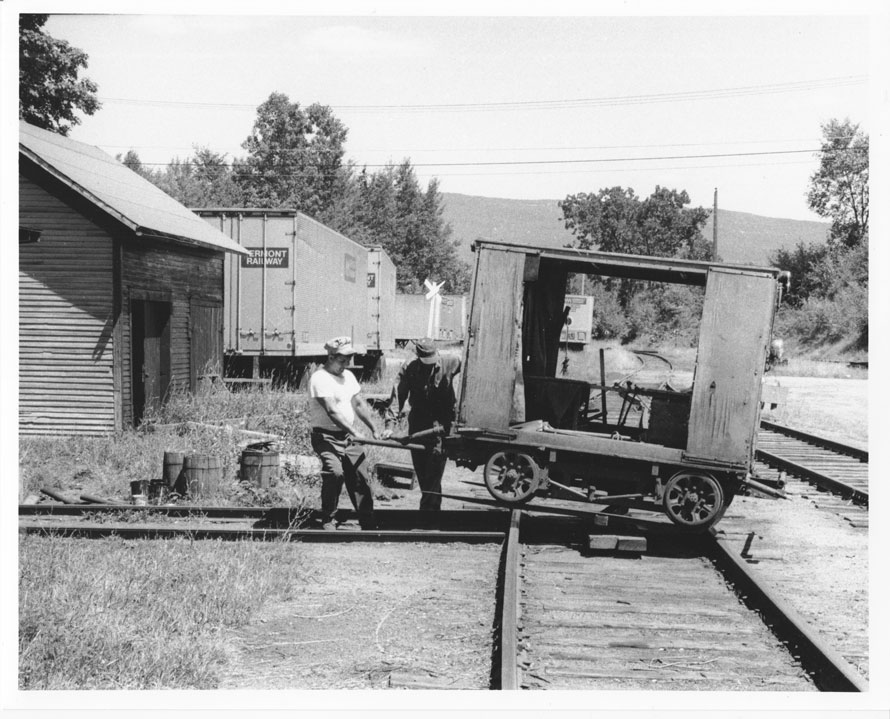
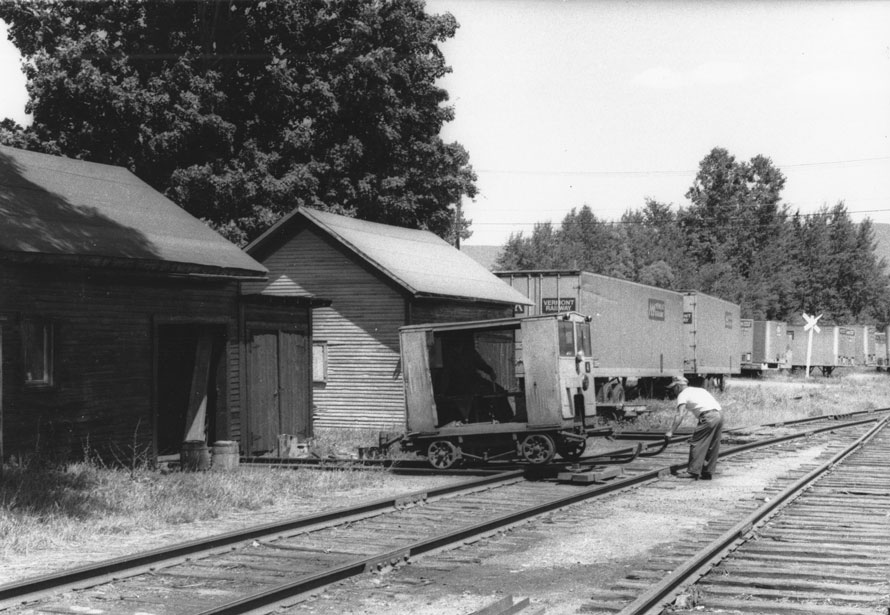
As I made more trips to visit the little yard, I met the denizens of those little buildings, the workers and their boss, Lou Scrivvins, another veteran of the Rutland. The sheds, redolent of kerosene, car oil, rotting wood and grease had spartan comfort features: a wood stove, a few battered old chairs and a table where the men would have lunch and sometimes play cards. Outside stood the foundation for a water tank that once catered to the steam locomotives, and an ever-bountiful scrap pile. Occasionally, some of this accumulation of rusted tie plates and spikes would be removed and carted off for salvage, revealing a stratified layer from another era where I could find such gems as discarded kerosene lanterns, or an oiler belonging to an engineer who’d long ago passed over to the Promised Land.
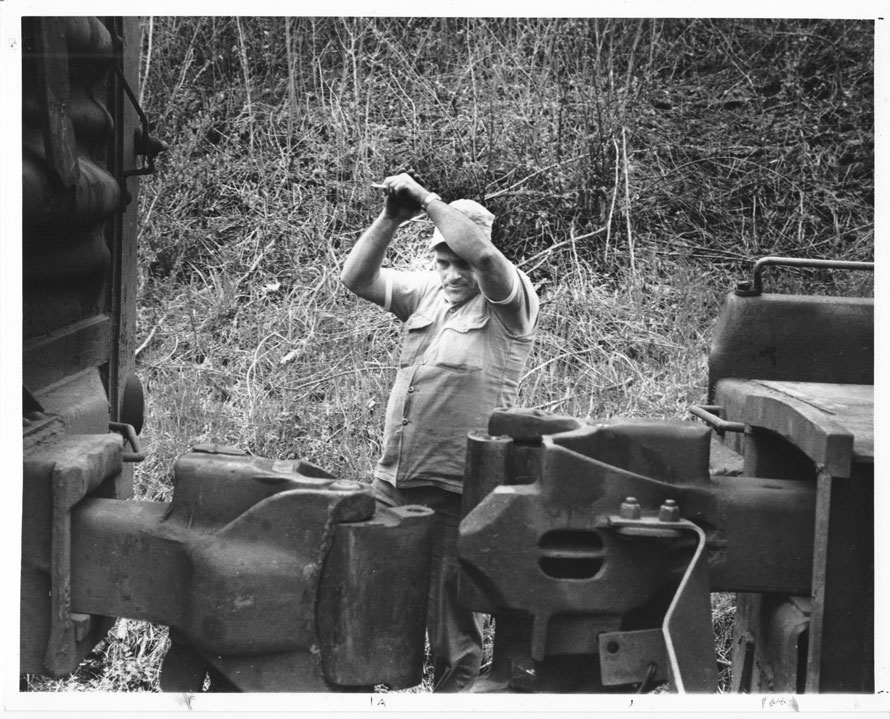
But, still, I had yet to ride a freight train. I seized the opportunity one day after school, quite by chance. Two girls, friends of mine and I bummed a ride to a high school play down in Bennington with a friend of theirs. Following the play, said friend decided he could only take us as far north as North Bennington; from there, we’d be on our own. Upon being deposited opposite The Villager, a restaurant where the railroad men often went to have dinner while waiting for the B&M local to arrive, we wondered just how we could get back to Arlington from that remote spot. I could hear the VTR’s SW-1500 No. 501 idling just up the street. “I know,” I said. “We can hitch a ride on the train.”
I think the immediate reaction from the two incredulous girls was something on the order of: “What? You’re going to thumb down a train?” But off to the station we went, and I begged the favor of a ride to Arlington from Chet, who huddled with the three-man crew. Quite a conversation ensued, and thumbs were pointed in our direction until one of the guys finally said: “Okay.” And off we went, in the cupola of the wooden caboose. Probably a lone teenager like me with a camera slung around his neck wouldn’t have stood a chance, but with two pretty girls in mini-skirts along with me, luck was on my side. And following this episode, I was “in” and started taking pictures. Success! I had Bogarted my way into the railroad scene I wanted to document.
This was how I met the engineer of the train. He was, in fact, the Chief Engineer of the railroad, the exceedingly tall and congenial Charlie Bischoff. Over the next several years I enjoyed many a cab ride with him and with engineer Clem D’Avignon.
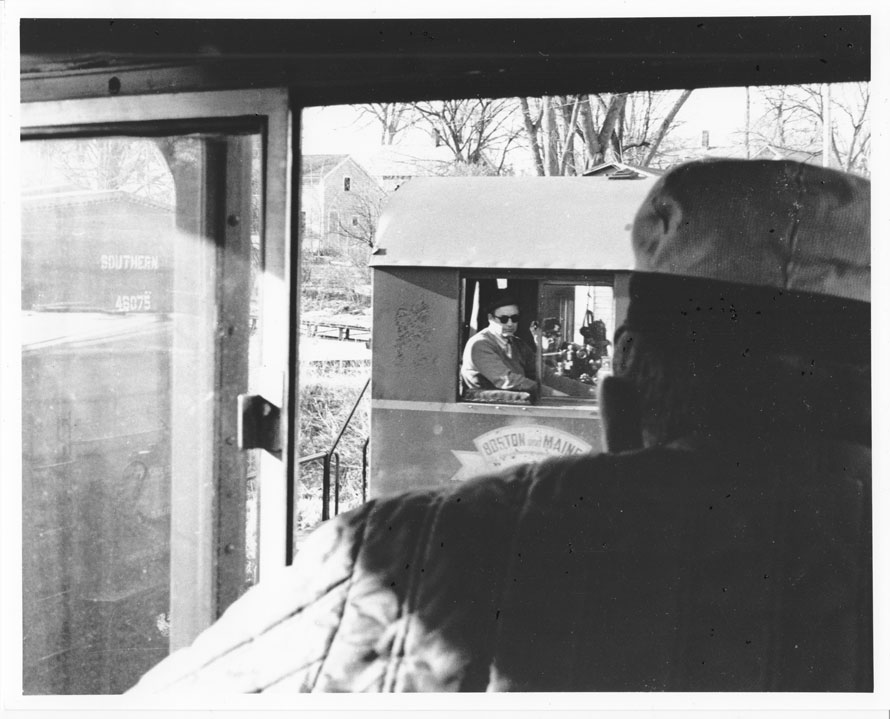
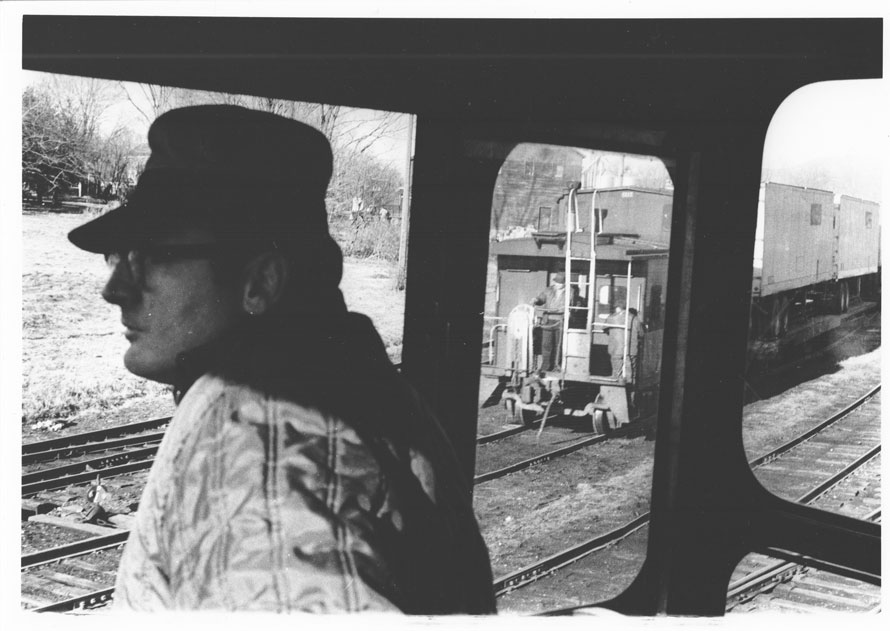
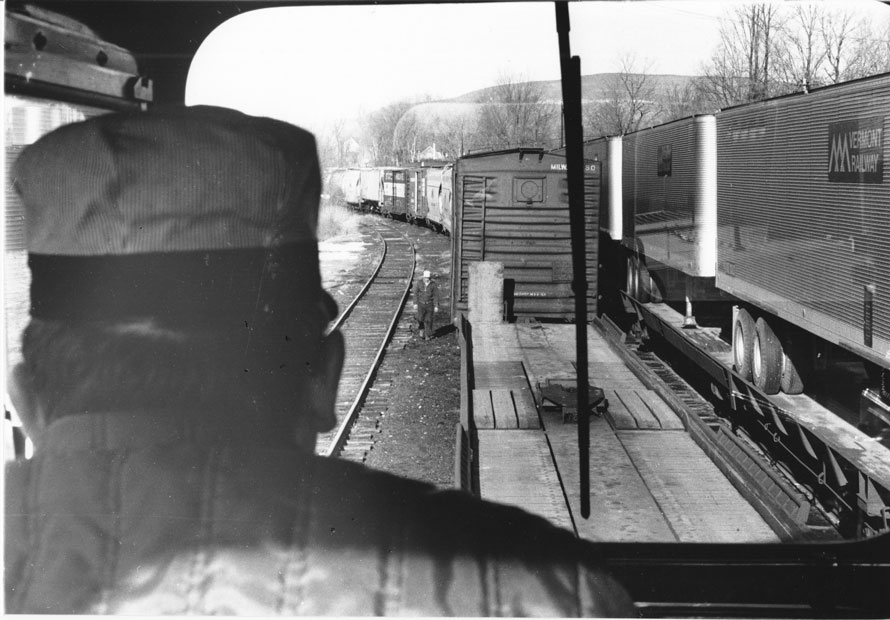
As attrition set in, the former Rutland RS-1s gave way to RS-3s that came from the Lehigh and Hudson River, and D&H. But, while the Fairmont speeders still puttered about in the hands of the track gang and ALCOs prevailed, I wondered how long it would be before the harsh realities of the railroad world caught up with the one I was photographing, as the ‘60s gave way to the ‘70s.
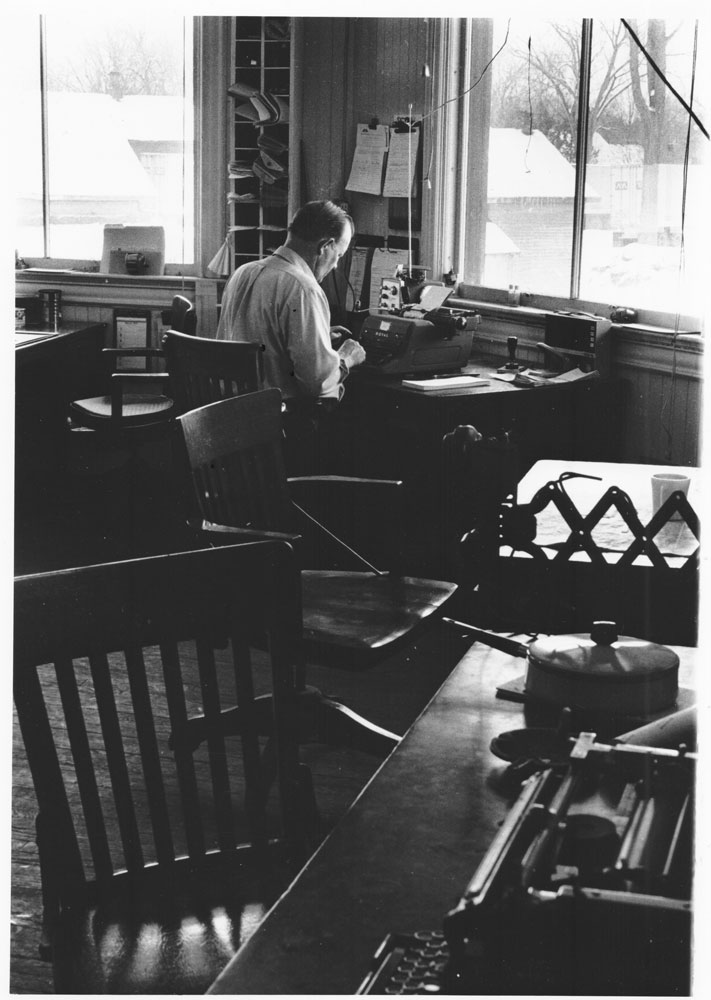
Before leaving for college in ’71, I spent an entire day at the wye taking pictures, riding around with the MofW crew, watching them changing out ties. I watched the B&M local come in from Mechanicville; watched the hind end brakeman pull the pin on the buggy and wind up the brake wheel after the conductor dropped off to go in and sign the train register in its ancient desk. And the head end dropped cars, turned on the wye, then backed onto the cut of westbound cars while the VTR’s RS-3 marked time outside the freight house and the sun settled lower into the horizon.
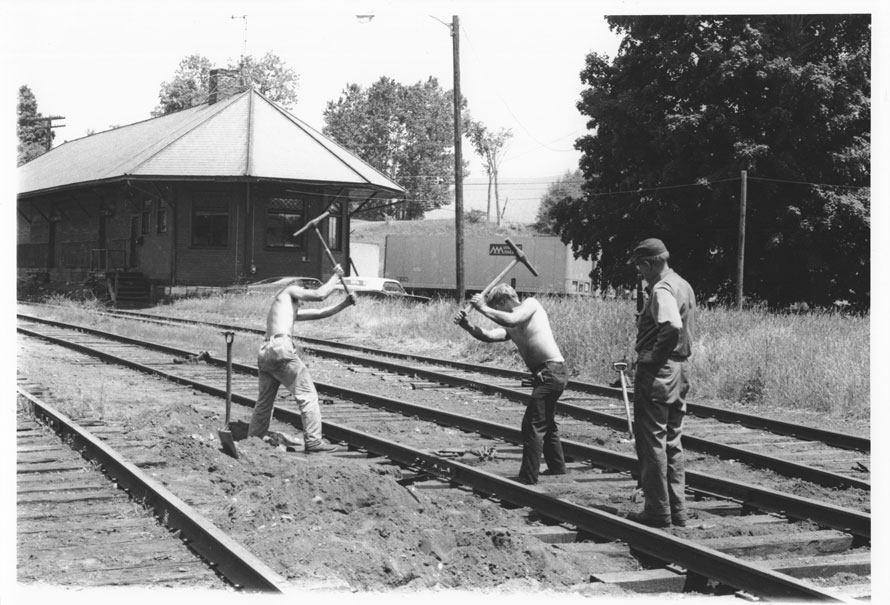
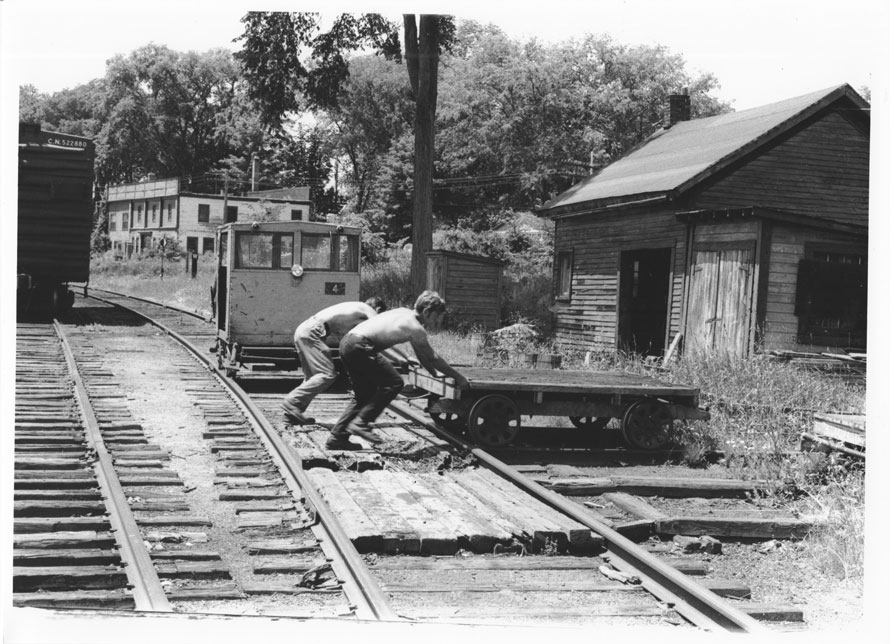
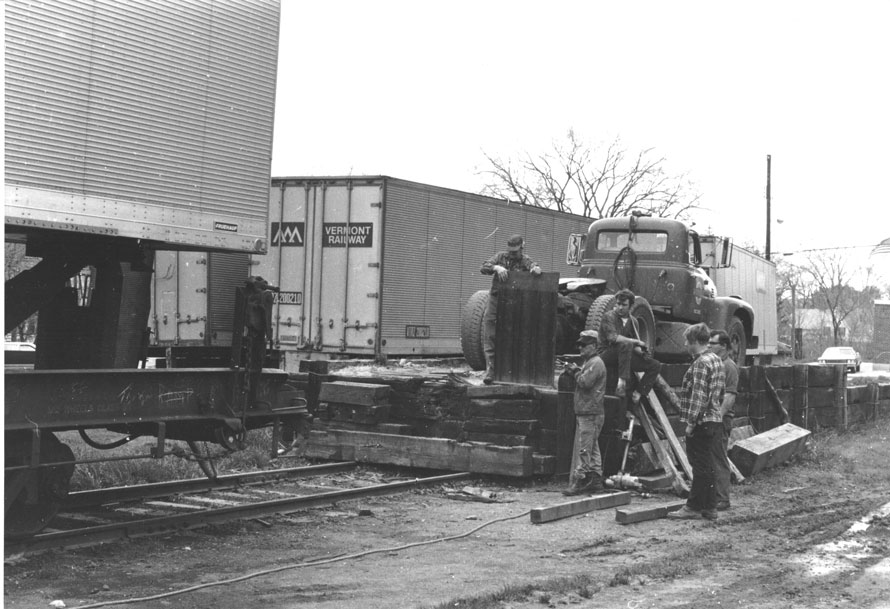
Today, the freight house is no longer in railroad use but occupied by an agricultural business. The once-abandoned, ornate Victorian-era passenger station was restored to its former glory in the ‘70s and now houses village offices. However, the human element seems to be missing from most of the railroad scene and where it isn’t, in the yard or on the main line, flash-orange safety vests and radios have replaced traditional striped caps, denim jumpers and hand lanterns. But trains still roll through town three days per week to connect with PanAm. The speeder sheds, bulldozed into oblivion a while ago, are but a memory as are the businesses once served in Bennington; the rails there were pulled in 2022, replaced by a bike path. Charlie, Chet, Clem—they’re gone too, as is the ticking clock that once hung on the freight house wall, counting minutes. Time doesn’t march on. It flies.
Phil Jordan – Photographs and text Copyright 2022
Really excellent, Phil, as always.
Phil,
This is an outstanding article and superb photos. Well done.
May I have your permission to republish this in the NMRA British Region magazine Roundhouse?
A perfect combination of prose and pictures. What a wonderful year 1971 in New England would have been. And sadly, yes, time does fly.
Enjoyed the story and the pics. You obviously received unhindered access to all facets of operations, with trusty camera in hand. Heh…just try that today. Had to smile at ‘Chet’ Platt pecking away on his ancient typewriter…heck, I’m still typing (one finger) that way on this keyboard, decades after a high school ‘typing’ class. What ever gets the job done.
Kudos for wonderful memories of small-town railroading.
An amazing collection of images and a poignant narrative. Very well done Phil!
I’m so glad you were able to capture these, Phil, and document them so well here. Thank you for sharing these.
Beautiful photos of a very wonderful human experiencein vermont railroading
Phil,
love your pictures I go to Vermont to fish and also rode some trains up there. I would like to speak to you about showing your pictures on zoom for a group of people that would really appreciate them. If you could let Edd know he will give you my email address and phone number
John